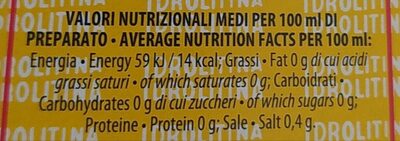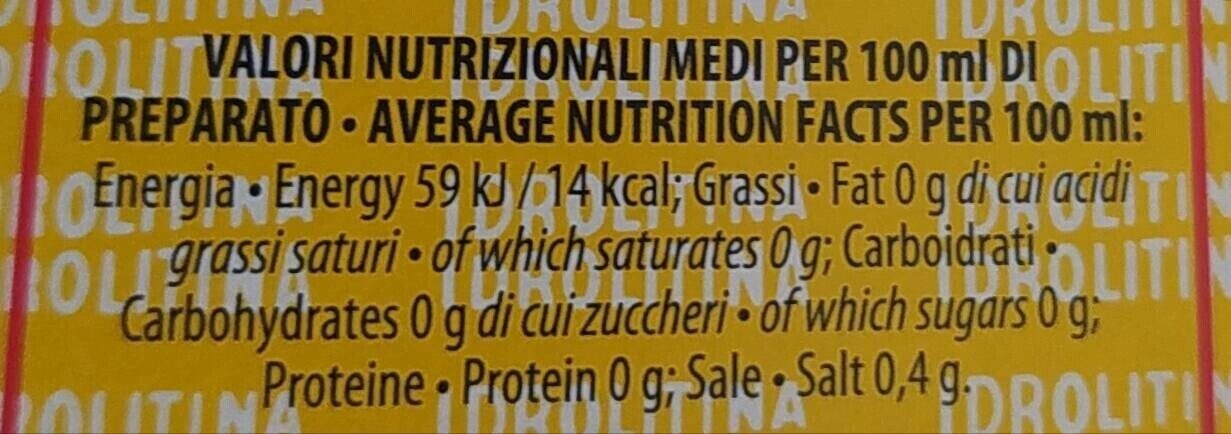Idrolitina - 200 g
This product page is not complete. You can help to complete it by editing it and adding more data from the photos we have, or by taking more photos using the app for Android or iPhone/iPad. Thank you!
×
Barcode: 8004990136628 (EAN / EAN-13)
Quantity: 200 g
Packaging: it:bustina carta, it:scatola carta
Brands: Idrolitina, Ristora
Categories: Beverages, Carbonated drinks, Waters, Carbonated waters
Manufacturing or processing places: via Deledda, 43 Montichiari (BS) Italia, Prontofood S.p.a., Via Grazia Deledda 43 - 25018 - Montichiari (BS), Italia
Stores: Coop
Matching with your preferences
Environment
Packaging
Transportation
Report a problem
Data sources
Product added on by kiliweb
Last edit of product page on by segundo.
Product page also edited by nexty, nur, openfoodfacts-contributors, packbot, tacinte, telperion87, yuka.ZnYwSlBxQW50OWxXaGNBd3hRUFJ4dWhxbVlLMFlrT1RkN0VjSVE9PQ, yuka.sY2b0xO6T85zoF3NwEKvlhB3TdzMvALWZxLVi0Oym-W-FK30XvQqwIzxaKo, yuka.sY2b0xO6T85zoF3NwEKvlhwWDMPQnWqZMg3tox2U-_CSFsDIb9Evs5bGbas, yuka.sY2b0xO6T85zoF3NwEKvlk1IS9HxhSKUaxL5pBaJ-ueMIs34YvIqw5ncMKg, yuka.sY2b0xO6T85zoF3NwEKvlkh5U4fAsg7dCTLTk2St2N2fFa30XtxN-NnQN6g, yuka.sY2b0xO6T85zoF3NwEKvlkkfcOTmkzfZCELhnXOB24_XCLLIO8pd7amnNqg, yuka.sY2b0xO6T85zoF3NwEKvlm9Zc9yHrw35NDfnwlWOydyWN634PNVS79feNag, yuka.sY2b0xO6T85zoF3NwEKvlnAaVPrghD3tPQbgx2_X7-2ULMfYXuN867DxEqs, yuka.sY2b0xO6T85zoF3NwEKvlnBeVfPCvB7vKBvfmUmA7NyMPsXSWcNXwaXRMag.










